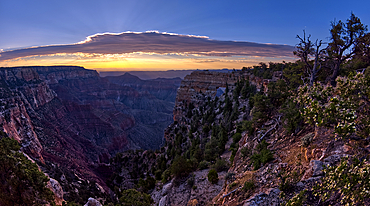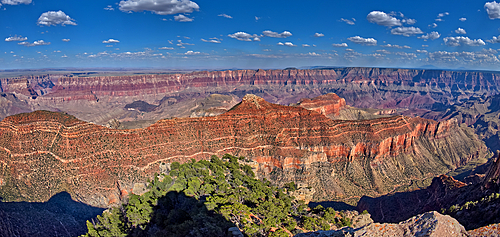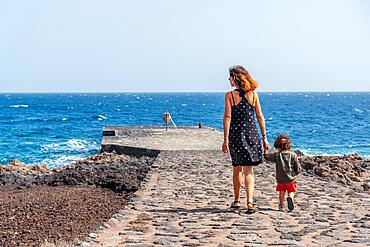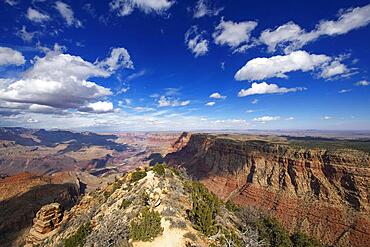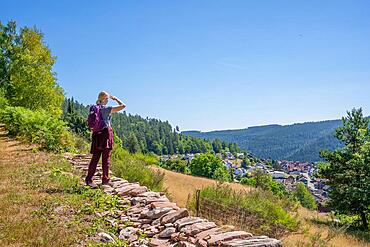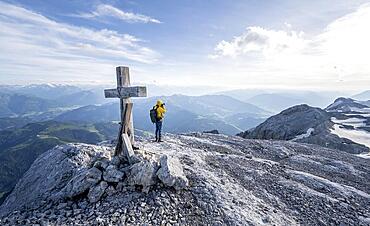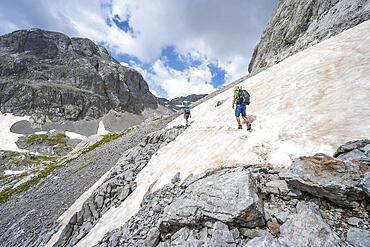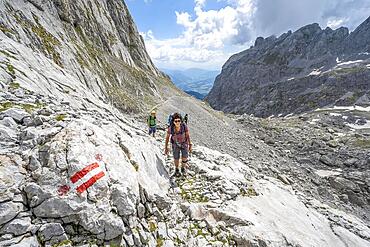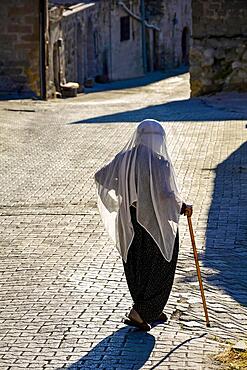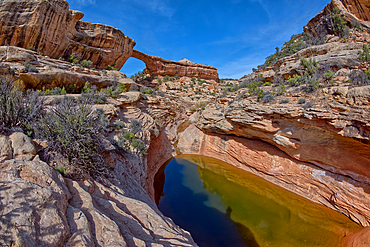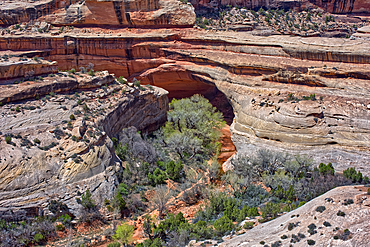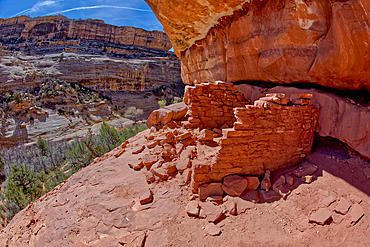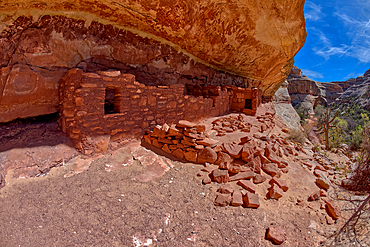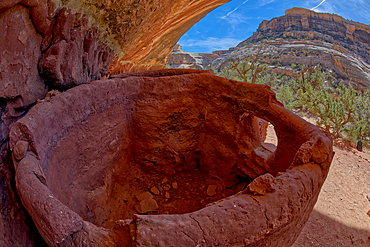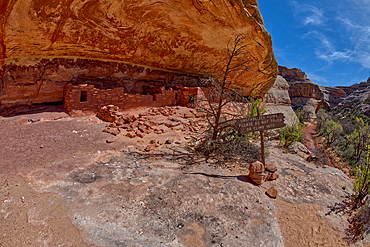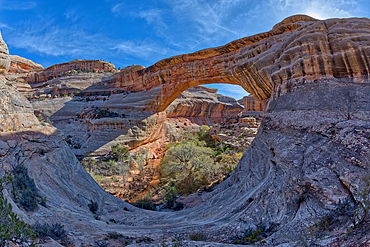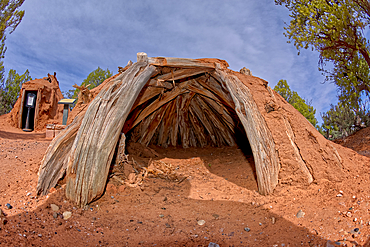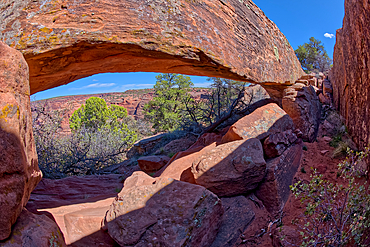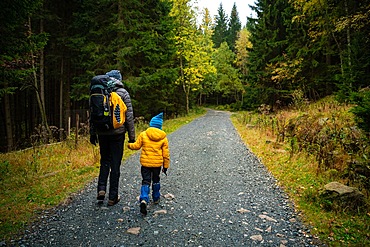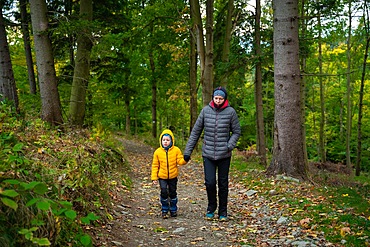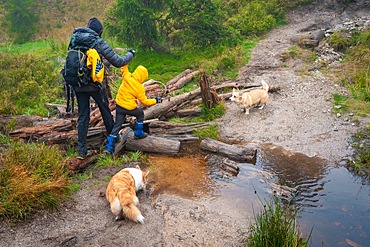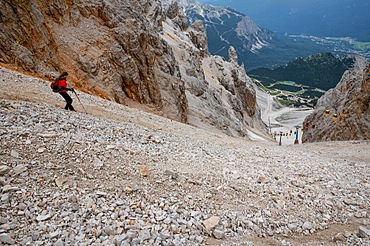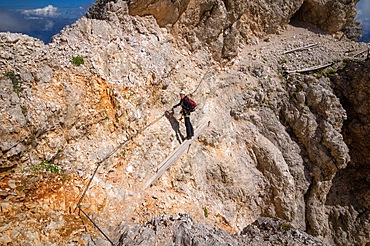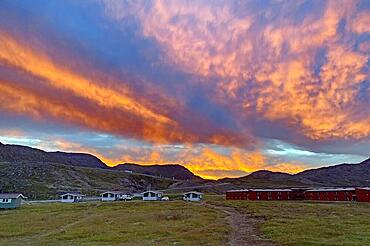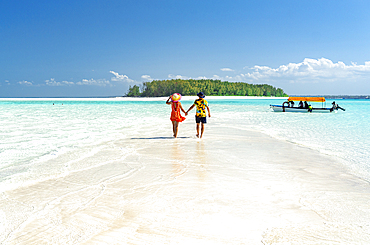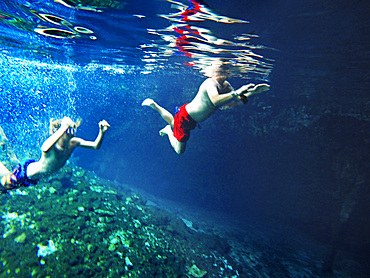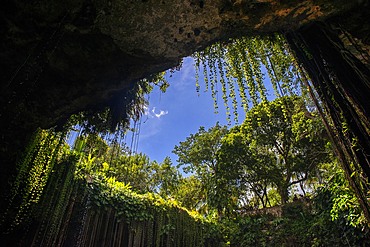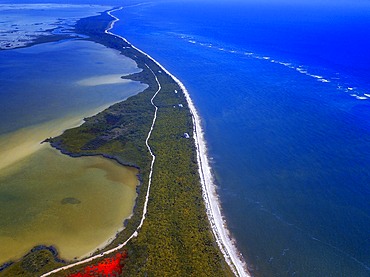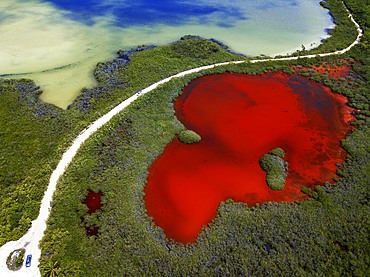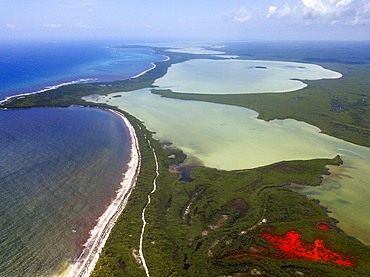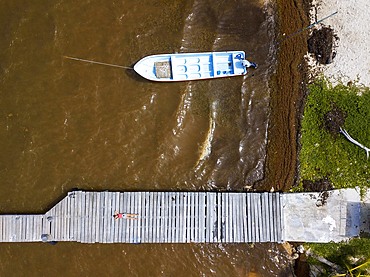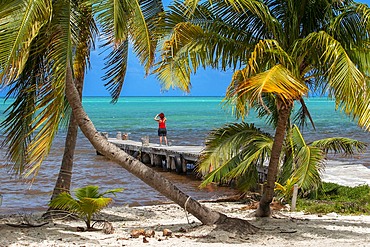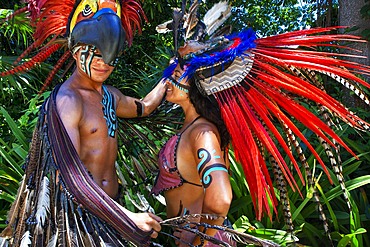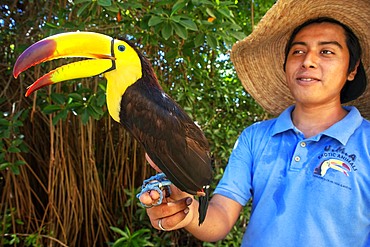Recent searches
Loading...
1311-697 - The Transept Trail sign where it branches off from the Bright Angel Point Trail on the North Rim of Grand Canyon, Grand Canyon National Park, UNESCO World Heritage Site, Arizona, United States of America, North America
1311-696 - The junction where the Transept Trail meets the Bright Angel Point Trail on the North Rim of Grand Canyon, Grand Canyon National Park, UNESCO World Heritage Site, Arizona, United States of America, North America
1311-695 - Bright Angel Point trail sign pointing the way to the overlook on Grand Canyon North Rim, Grand Canyon National Park, UNESCO World Heritage Site, Arizona, United States of America, North America
1311-694 - An overlook along the Transept Trail at Grand Canyon North Rim at twilight, Grand Canyon National Park, UNESCO World Heritage Site, Arizona, United States of America, North America
1311-693 - The paved pathway between Bright Angel Point and the visitor center at Grand Canyon North Rim at twilight, Grand Canyon National Park, UNESCO World Heritage Site, Arizona, United States of America, North America
1311-692 - The paved pathway between Bright Angel Point and the visitor center at Grand Canyon North Rim at twilight, Grand Canyon National Park, UNESCO World Heritage Site, Arizona, United States of America, North America
1311-691 - Bright Angel Point Bridge on Grand Canyon North Rim at twilight, Grand Canyon National Park, UNESCO World Heritage Site, Arizona, United States of America, North America
1311-690 - Uncle Jim Point viewed from Bright Angel Point on the North Rim of Grand Canyon at twilight, Grand Canyon National Park, UNESCO World Heritage Site, Arizona, United States of America, North America
1311-689 - Oza Butte viewed from Bright Angel Point on North Rim after sundown, Grand Canyon National Park, UNESCO World Heritage Site, Arizona, United States of America, North America
1311-688 - View of Grand Canyon from Bright Angel Point on the North Rim, with Brahma and Zoroaster Temples visible in the distance an Oza Butte on far right, Grand Canyon National Park, UNESCO World Heritage Site, Arizona, United States of America, North America
1311-687 - Closeup of Angel's Window at Cape Royal on North Rim above Unker Creek near sundown, with brown haze on the horizon smoke from a wildfire near the park, Grand Canyon National Park, UNESCO World Heritage Site, Arizona, United States of America, North America
1311-686 - Angel's Window at Cape Royal on North Rim above Unker Creek near sundown, with smoke from a wildfire creating brown haze on the horizon, Gand Canyon National Park, UNESCO World Heritage Site, Arizona, United States of America, North America
1311-679 - Wooden sign marking the way to Roosevelt Point on the North Rim of Grand Canyon, Arizona, United States of America, North America
1311-678 - Grand Canyon North Rim viewed from Roosevelt Point with Tritle Peak on the left and Atoko Point on the right, Gand Canyon, Arizona, United States of America, North Amerca
1311-677 - The summit of Tritle Peak off Roosevelt Point on Grand Canyon North Rim, Grand Canyon National Park, UNESCO World Heritage Site, Arizona, United States of America, North America
1311-684 - Junction sign for the trails leading to Angels Window and Cape Royal at Grand Canyon North Rim, Grand Canyon National Park, UNESCO World Heritage Site, Arizona, United States of America, North America
1311-685 - Angels Window at Cape Royal on the North Rim of Grand Canyon at sunrise, Grand Canyon National Park, UNESCO World Heritage Site, Arizona, United States of America, North America
1311-683 - View of Freya's Castle and Vishnu Temple on the left and Wotan's Throne on the right at sunrise viewed from Cape Royal, North Rim, Grand Canyon National Park, UNESCO World Heritage Site, Arizona, United States of America, North America
1311-681 - Angels Window Overlook on North Rim of Grand Canyon at sunrise, Grand Canyon National Park, UNESCO World Heritage Site, Arizona, United States of America, North America
1311-667 - View of Grand Canyon from the south cliffs of Cape Final on the North Rim with Unkar Creek below and right of centre the pointed peak of Freya's Castle, Grand Canyon National Park, UNESCO World Heritage Site, Arizona, United States of America, North America
1311-666 - A narrow canyon along the south cliffs of Cape Final on the North Rim, with the pointed peak of Freya's Castle in the distance, Grand Canyon, Arizona, United States of America, North America
1311-665 - A sign posted by the Park Service pointing the way to Cape Final on the North Rim of Grand Canyon, Arizona, United States of America, North America
1311-664 - Jupiter Temple, a ridge on the east side of the North Rim, viewed from Cape Final, Grand Canyon National Park, UNESCO World Heritage Site, Arizona, United States of America, North America
1311-663 - South Rim in the distance viewed from Cape Final on the North Rim with Freya's Castle just right of center, Grand Canyon National Park, UNESCO World Heritage Site, Arizona, United States of America, North America
832-401165 - A mother on a bridge on the La Llania trekking trail in El Hierro, Canary Islands. lush green landscape
832-401164 - A mother with her son next to a sign identifying the La Llania trekking trail in El Hierro, Canary Islands. lush green landscape
832-401162 - Mother and son walking in La Llania on El Hierro, Canary Islands. On a path of laurel from El Hierro in a lush green landscape
832-401127 - Mother and son on vacation in summer at the pier of Orchilla on the southwest coast of El Hierro. Canary Islands
832-401126 - Mother and son at the pier in Orchilla on the southwest coast of El Hierro. Canary Islands
832-400756 - Hikers in a chestnut avenue on the long-distance hiking trail Maerkischer Landweg in autumn, Annenwalde, Templin, Uckermark, Brandenburg, Germany, Europe
832-400732 - View from South Rim, Grand Canyon National Park, Arizona, USA, North America
832-400733 - Desert View Observation Tower, South Rim, Grand Canyon National Park, Arizona, USA, North America
832-400588 - Hiker woman standing on stones and looking at village in Black Forest, Sprollenhaeuser Hut, Bad Wildbad, Black Forest, Germany, Europe
832-400584 - Hiker in the forest, Bad Wildbad, Black Forest, Germany, Europe
832-400549 - Climbers in the snow, Fjell, barren landscape, hike to Mount Snohetta, Dovrefjell National Park, Oppdal, Norway, Europe
832-400548 - Climbers at the top of Snohetta Mountain, with snow, Dovrefjell National Park, Oppdal, Norway, Europe
832-400542 - Mountaineer at a secondary peak of the Hochkoenig with summit cross, photographed, view of mountain panorama, Berchtesgaden Alps, Salzburger Land, Austria, Europe
832-400541 - Mountaineer at the summit of the Hochkoenig, photographed, view of mountain panorama, Berchtesgaden Alps, Salzburger Land, Austria, Europe
832-400540 - Mountaineers climbing the Hochkoenig, Rocky mountain landscape with remnants of snow, Berchtesgaden Alps, Salzburger Land, Austria, Europe
832-400539 - Mountaineers climbing the Hochkoenig, Rocky mountain landscape, Berchtesgaden Alps, Salzburger Land, Austria, Europe
832-400537 - Hikers climbing to the top of Skala, view of mountains and fjord Faleidfjorden, Loen, Norway, Europe
832-400529 - Hikers at the top of Dronningsvarden or Stortinden, view of Fjord Raftsund and mountains, Sun Star, Vesteralen, Norway, Europe
832-400316 - Young redhaired bald woman on the street. Girl with short shaved hair walking in the evening in the city center
832-400178 - Old lady wearing the clothes and Islam veil walking the streets of Goreme in Cappadocia, Turkey, Capadocia, Goreme, Brasil, Asia
1311-659 - Valley of the Gods viewed from the north slope of the rock formation called Rudolph and Santa, northwest of Monument Valley and Mexican Hat, Utah, United States of America, North America
1311-655 - The Owachomo Bridge (Rock Mound in Hopi), Natural Bridges National Monument, Utah, United States of America, North America
1311-654 - The Owachomo Bridge (Rock Mound in Hopi), Natural Bridges National Monument, Utah, United States of America, North America
1311-653 - The Owachomo Bridge (Rock Mound in Hopi), Natural Bridges National Monument, Utah, United States of America, North America
1311-651 - A small waterfall near Kachina Bridge in Deer Canyon, Natural Bridges National Monument, Utah, United States of America, North America
1311-652 - The Kachina Bridge, named for the Hopi Kachina dancers, Natural Bridges National Monument, Utah, United States of America, North America
1311-649 - The Horse Collar Ruins located between the Sipapu Arch Bridge and the Kachina Arch Bridge, Natural Bridges National Monument, Utah, United States of America, North America
1311-648 - The Horse Collar Ruins located between the Sipapu Arch Bridge and the Kachina Arch Bridge, Natural Bridges National Monument, Utah, United States of America, North America
1311-647 - The Horse Collar Ruins located between the Sipapu Arch Bridge and the Kachina Arch Bridge, Natural Bridges National Monument, Utah, United States of America, North America
1311-646 - The Horse Collar Ruins with a sign warning to not disturb them due to instability, located between the Sipapu Arch Bridge and the Kachina Arch Bridge, Natural Bridges National Monument, Utah, United States of America, North America
1311-645 - The Sipapu Bridge (Gateway of the Soul in Hopi), the second highest natural arch in America, Natural Bridges National Monument, Utah, United States of America, North America
1311-642 - Betatakin Canyon, Navajo National Monument, inside the Navajo Indian Reservation northwest of the town of Kayenta, Arizona, United States of America, North America
1311-643 - Ancient Hogans used in Navajo ceremonies, in Navajo National Monument, Navajo Indian Reservation northwest of the town of Kayenta, Arizona, United States of America, North America
1311-636 - View of Spider Rock from the overlook at the end of Canyon De Chelly National Monument South Rim, Arizona, United States of America, North America
1311-634 - A hidden natural arch near Sliding House Overlook on the south rim of Canyon De Chelly, Arizona, United States of America, North America
1311-632 - View of Cottonwood Canyon in Canyon De Chelly west of the Tseyi Overlook, Arizona, United States of America, North America
1311-630 - The haunted Massacre House Ruins in Canyon del Muerto (Canyon of the Dead), on the north end of Canyon De Chelly, site of a Navajo massacre by Spanish Soldiers in 1825, Arizona, United States of America, North America
1311-629 - Caves in the cliff walls, used to store food by ancient Anasazi Indians, Canyon De Chelly National Monument, Arizona, United States of America, North America
1311-627 - Glen Canyon Recreation Area with, on the left, Vermillion Cliffs National Monument and Marble Canyon, viewed from an observation point along US89 south of Page, Arizona, United States of America, North America
832-399792 - Text Summer camp written on black chalkboard, with chalk sticks of different colors
832-399902 - During the autumn, my mother and her little son go on a mountain trail. Polish mountains, Poland, Europe
832-399903 - During the autumn, my mother and her little son go on a mountain trail. Polish mountains, Poland, Europe
832-399904 - Mom with her son and dogs walk over logs lying on a small stream. Polish mountains, Poland, Europe
832-399911 - The descent of the tourist on the loose stones from the Forcella Staunies pass in the Dolomites. Dolomites, Italy, Dolomites, Italy, Europe
832-399913 - Tourist crossing the via ferrata trail with equipment in the dolomites. Dolomites, Italy, Dolomites, Italy, Europe
832-399912 - The tutor stands on a rake with a beautiful view in the background of the Alpine Dolomites. Dolomites, Italy, Dolomites, Italy, Europe
832-400048 - Mountain of Aiako Harria or Penas de Aya in the municipality of Oiatzun, Basque Country. Feet of mountaineer sitting on the trekking on the top
832-399514 - Gift, red chocolate heart and red roses
832-399046 - View of Lake Gjende and Bessvatnet from the Besseggen Ridge in Norway
832-399045 - Hikers walking on the famous Besseggen ridge in the Jotunheimen mountains, Norway, Europe
832-399044 - Hikers walking on the famous Besseggen ridge in the Jotunheimen mountains, Norway, Europe
832-398453 - top view beautiful arrangement mother s day
832-398749 - Dramatic sunset over small cabins at a campsite, Honningsvag, Finnmark, Norway, Europe
809-8671 - The Sculpture of Love and Anguish, the centerpiece of the Jewish Holocaust Memorial, by Kenneth Treister, Miami Beach, Miami, Florida, United States of America, North America
809-8654 - The Sculpture of Love and Anguish, the centerpiece of the Jewish Holocaust Memorial, by Kenneth Treister, Miami Beach, Miami, Florida, United States of America, North America
1359-771 - Painted mural with text saying Plante amor (Plant love) and heart at Cerro La Florida, Valparaiso, Valparaiso Province, Valparaiso Region, Chile, South America
1179-6169 - Man and woman in love holding hands walking on empty sandy shore surrounded by the Indian Ocean, Zanzibar, Tanzania, East Africa, Africa
1311-617 - View from Picnic Hill along the Thumb Butte day use hiking trail covered in winter snow and ice, Prescott National Forest, west of Prescott, Arizona, United States of America, North America
1178-44046 - Family visits Craters of the Moon National Monument to see lava fields
1350-6636 - Aerial view of Mayan Ruin of Chichen Itza Archaeological Site Yucatan Peninsula, Quintana Roo, Caribbean Coast, Mexico
1350-6635 - Aerial view of Mayan Ruin of Chichen Itza Archaeological Site Yucatan Peninsula, Quintana Roo, Caribbean Coast, Mexico
1350-6630 - Swimming at Cenote Ik Kil in Yucatan, Mexico, a natural pit, or sinkhole near Chichen Itza. Yucatan Peninsula, Quintana Roo, Mexico. Ik Kil was sacred to the Mayans who used this cenote for both relaxation and ritual services centuries ago.
1350-6633 - Gran Cenote de Tulum in Yucatan Peninsula, Quintana Roo, Mexico. There are thousands of cenotes dotted all over Mexico���s Yucatan Peninsula, and their existence is as much a defining characteristic of the region as is the distinct geological feature from which they result. Once revered by the ancient Mayans as sacred wells, they are now magnets for tourists, adventurers, and explorers alike.
1350-6628 - Cenote Ik Kil in Yucatan, Mexico, a natural pit, or sinkhole near Chichen Itza. Yucatan Peninsula, Quintana Roo, Mexico. Ik Kil was sacred to the Mayans who used this cenote for both relaxation and ritual services centuries ago.
1350-6627 - Aerial view of Punta Allen Sian Ka'an Reserve, Yucatan Peninsula, Mexico. Red lagoon near Boca Paila Bridge.
In the language of the Mayan peoples who once inhabited this region, Sian Ka'an means Origin of the Sky. Located on the east coast of the Yucatán peninsula, this biosphere reserve contains tropical forests, mangroves and marshes, as well as a large marine section intersected by a barrier reef. It provides a habitat for a remarkably rich flora and a fauna comprising more than 300 species of birds, as well as a large number of the region's characteristic terrestrial vertebrates, which cohabit in the diverse environment formed by its complex hydrological system.
Along its roughly 120 kilometres of coastline, the property covers over 400,000 hectares of land ranging from sea level to only ten m.a.s.l. The property boasts diverse tropical forests, palm savannah, one of the most pristine wetlands in the region, lagoons, extensive mangrove stands, as well as sandy beaches and dunes. The 120,000 hectares of marine area protect a valuable part of the Mesoamerican Barrier Reef and seagrass beds in the shallow bays. The lush green of the forests and the many shades of blue of the lagoons and the Caribbean Sea under a wide sky offer fascinating visual impressions.
1350-6623 - Aerial view of Punta Allen Sian Ka'an Reserve, Yucatan Peninsula, Mexico. Red lagoon near Boca Paila Bridge.
In the language of the Mayan peoples who once inhabited this region, Sian Ka'an means Origin of the Sky. Located on the east coast of the Yucatán peninsula, this biosphere reserve contains tropical forests, mangroves and marshes, as well as a large marine section intersected by a barrier reef. It provides a habitat for a remarkably rich flora and a fauna comprising more than 300 species of birds, as well as a large number of the region's characteristic terrestrial vertebrates, which cohabit in the diverse environment formed by its complex hydrological system.
Along its roughly 120 kilometres of coastline, the property covers over 400,000 hectares of land ranging from sea level to only ten m.a.s.l. The property boasts diverse tropical forests, palm savannah, one of the most pristine wetlands in the region, lagoons, extensive mangrove stands, as well as sandy beaches and dunes. The 120,000 hectares of marine area protect a valuable part of the Mesoamerican Barrier Reef and seagrass beds in the shallow bays. The lush green of the forests and the many shades of blue of the lagoons and the Caribbean Sea under a wide sky offer fascinating visual impressions.
1350-6625 - Aerial view of Punta Allen Sian Ka'an Reserve, Yucatan Peninsula, Mexico. Red lagoon near Boca Paila Bridge.
In the language of the Mayan peoples who once inhabited this region, Sian Ka'an means Origin of the Sky. Located on the east coast of the Yucatán peninsula, this biosphere reserve contains tropical forests, mangroves and marshes, as well as a large marine section intersected by a barrier reef. It provides a habitat for a remarkably rich flora and a fauna comprising more than 300 species of birds, as well as a large number of the region's characteristic terrestrial vertebrates, which cohabit in the diverse environment formed by its complex hydrological system.
Along its roughly 120 kilometres of coastline, the property covers over 400,000 hectares of land ranging from sea level to only ten m.a.s.l. The property boasts diverse tropical forests, palm savannah, one of the most pristine wetlands in the region, lagoons, extensive mangrove stands, as well as sandy beaches and dunes. The 120,000 hectares of marine area protect a valuable part of the Mesoamerican Barrier Reef and seagrass beds in the shallow bays. The lush green of the forests and the many shades of blue of the lagoons and the Caribbean Sea under a wide sky offer fascinating visual impressions.
1350-6620 - Aerial view of Punta Allen Sian Ka'an Reserve, Yucatan Peninsula, Mexico. Red lagoon near Boca Paila Bridge.
In the language of the Mayan peoples who once inhabited this region, Sian Ka'an means Origin of the Sky. Located on the east coast of the Yucatán peninsula, this biosphere reserve contains tropical forests, mangroves and marshes, as well as a large marine section intersected by a barrier reef. It provides a habitat for a remarkably rich flora and a fauna comprising more than 300 species of birds, as well as a large number of the region's characteristic terrestrial vertebrates, which cohabit in the diverse environment formed by its complex hydrological system.
Along its roughly 120 kilometres of coastline, the property covers over 400,000 hectares of land ranging from sea level to only ten m.a.s.l. The property boasts diverse tropical forests, palm savannah, one of the most pristine wetlands in the region, lagoons, extensive mangrove stands, as well as sandy beaches and dunes. The 120,000 hectares of marine area protect a valuable part of the Mesoamerican Barrier Reef and seagrass beds in the shallow bays. The lush green of the forests and the many shades of blue of the lagoons and the Caribbean Sea under a wide sky offer fascinating visual impressions.
1350-6616 - Aerial view of Punta Allen Sian Ka'an Reserve, Yucatan Peninsula, Mexico.
In the language of the Mayan peoples who once inhabited this region, Sian Ka'an means Origin of the Sky. Located on the east coast of the Yucatán peninsula, this biosphere reserve contains tropical forests, mangroves and marshes, as well as a large marine section intersected by a barrier reef. It provides a habitat for a remarkably rich flora and a fauna comprising more than 300 species of birds, as well as a large number of the region's characteristic terrestrial vertebrates, which cohabit in the diverse environment formed by its complex hydrological system.
Along its roughly 120 kilometres of coastline, the property covers over 400,000 hectares of land ranging from sea level to only ten m.a.s.l. The property boasts diverse tropical forests, palm savannah, one of the most pristine wetlands in the region, lagoons, extensive mangrove stands, as well as sandy beaches and dunes. The 120,000 hectares of marine area protect a valuable part of the Mesoamerican Barrier Reef and seagrass beds in the shallow bays. The lush green of the forests and the many shades of blue of the lagoons and the Caribbean Sea under a wide sky offer fascinating visual impressions.
1350-6615 - Palms and old pier in Punta Allen Sian Ka'an Reserve, Yucatan Peninsula, Mexico.
In the language of the Mayan peoples who once inhabited this region, Sian Ka'an means Origin of the Sky. Located on the east coast of the Yucatán peninsula, this biosphere reserve contains tropical forests, mangroves and marshes, as well as a large marine section intersected by a barrier reef. It provides a habitat for a remarkably rich flora and a fauna comprising more than 300 species of birds, as well as a large number of the region's characteristic terrestrial vertebrates, which cohabit in the diverse environment formed by its complex hydrological system.
Along its roughly 120 kilometres of coastline, the property covers over 400,000 hectares of land ranging from sea level to only ten m.a.s.l. The property boasts diverse tropical forests, palm savannah, one of the most pristine wetlands in the region, lagoons, extensive mangrove stands, as well as sandy beaches and dunes. The 120,000 hectares of marine area protect a valuable part of the Mesoamerican Barrier Reef and seagrass beds in the shallow bays. The lush green of the forests and the many shades of blue of the lagoons and the Caribbean Sea under a wide sky offer fascinating visual impressions.
1350-6611 - Underwater close up view of open coral polyp during a dive, Cancun, Quintana Roo, Mexico
1350-6608 - Mexican aztec dress gods at Grand Palladium White Sand Resort and Spa in Riviera Maya, Yucatan Peninsula, Quintana Roo, Caribbean Coast, Mexico.
Aztec clothing was generally loose fitting and did not completely cover the body. When the Spanish arrived in Mexico, the people were surprised to see them in their full armour, with only their faces exposed.
Aztec clothes were generally made of cotton (which was imported) or ayate fiber, made from the Maguey Cactus (also called the Century Plant or American Aloe). Women would weave the fibers into clothing, a task girls were taught as young teenagers. Because of their vast trading network, the Aztecs were able to make use of a beautiful array of dyes, creating the brilliant
1350-6609 - Kayakking in front of the beach of Grand Palladium White Sand Resort and Spa in Riviera Maya, Yucatan Peninsula, Quintana Roo, Caribbean Coast, Mexico
1350-6606 - A Mexican staff member holds a tucan at Grand Palladium White Sand Resort and Spa in Riviera Maya, Yucatan Peninsula, Quintana Roo, Caribbean Coast, Mexico
















